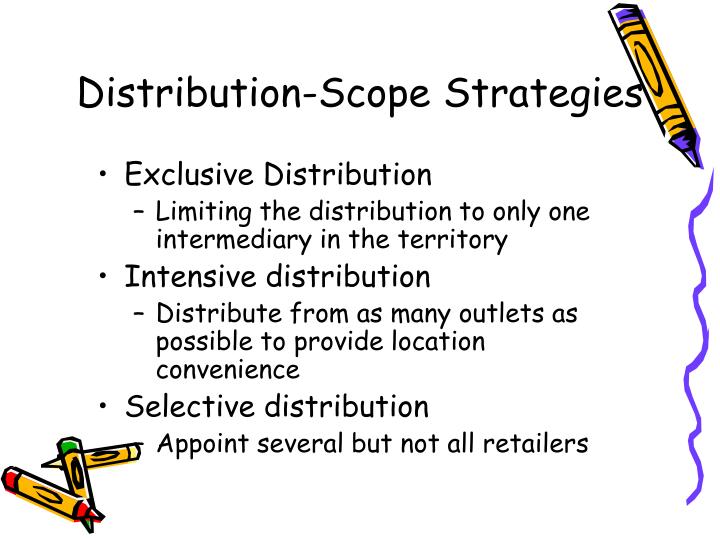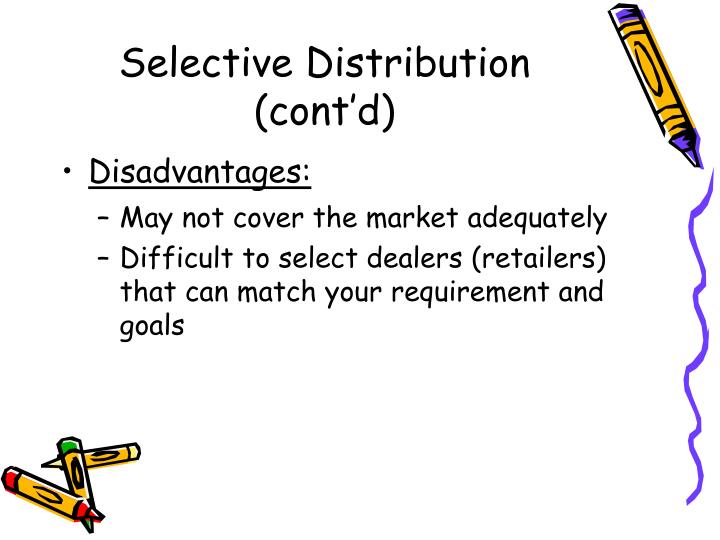Disclaimer: We sometimes use affiliate links in our content. For more information, visit our Disclaimer Page.
When it comes to selling products, most brands use various methods to get their items into the hands of consumers.
One such way is selective distribution, which is a strategy that puts certain products in specific stores based on factors like location, target market, and other strategic decisions. Here, we’ll take a closer look at selective distribution, how brands use it to their advantage, and some notable examples.
Selective distribution (Explanation)
Selective distribution occurs when a firm opens only a few outlets in a particular area. Sure, this may appear limiting at first, but it aids in the selection process. This results in superior outcomes and allows the corporation to devote all of its attention (training facilities and resources) to more effective use.
For manufacturing businesses who want to focus on a few outlets rather than spread their efforts and resources across numerous small ones., selective distribution is favorite.
How does selective distribution work?
Selective distribution involves a business selecting which retailers or distributors will be allowed to sell their products. Before brands work with these retailers, they’ll often reach out to create a strategic partnership that will benefit both the company and the stores.
For example, this strategy can eliminate excess stock where demand is low, but the product still needs to be moved before it expires. By limiting who has access to specific products, brands can also ensure that the items will be displayed strategically and effectively for their organization.
In some cases, a company might not have much excess inventory but still wants to limit which stores stock its products. Therefore, they’ll use selective distribution as a strategy to differentiate how each retailer is chosen based on the individual store’s target market and economic status.
Selective distribution (Strategy)
Selective distribution is a beneficial sales tactic for companies with many products to sell in various markets. For example, let’s say you have new, innovative headphones ready to hit the shelves but aren’t sure which retailers to work with.
You can begin selling your headphones to more established electronic stores while limiting new headphone retailers with the same customer base or economic stability through selective distribution.
Similarly, this strategy can be beneficial for companies who are still trying to figure out what products are most popular in which markets. By only allowing sales in select stores, brands can learn which products are moving quickly and which ones need to be phased out to make room for new items.
Examples of Selective Distribution Strategy
A great way to see how selective distribution works is by looking at some notable examples of this tactic. Let’s take a look.
– Pandora
One of the more famous examples of selective distribution is found in the music industry with the online radio service Pandora.
Because it has grown so quickly, Pandora now operates internationally and enjoys massive success. But when it first started, the company only wanted to limit its website’s access instead of targeting traditional radio markets. As a result, Pandora kept its product exclusive by only offering website access to users who didn’t have existing subscriptions with other online radio services like iHeartRadio.
– Apple
Another excellent example of selective distribution is Apple Incorporated. Founded in the 1970s, the company became successful because it limited which retailers could sell their products while maintaining a high price.
When the first Apple computers hit the markets, they sold for roughly $666 each. This was an expensive product to make, and buyers were quickly only able to find them in select stores like Macy’s and a few others.
As time went on, Apple started including other retailers but still kept its products exclusive to only the most prestigious stores. Today, Apple products can be found in almost any electronics store but are often sold at significantly higher prices than its competitors.

Intensive and Exclusive Distribution Strategies
As the name suggests, intensive distribution is when a product is available to as many outlets as possible.
This usually means that products are sold in bulk and at low prices, giving more prominent brands an advantage over smaller competitors who may not have the same market exposure. Unfortunately, companies using these sales tactics often risk losing control over their products and how those items are displayed.
For example, big retailers like Walmart and Target often receive exclusive deals on certain items to ensure that they sell the most of a particular product. Unfortunately, this can prevent other stores from getting their hands on those goods, and it also means that brands aren’t able to see the full scope of where their products are being sold.
The opposite of this distribution tactic is an exclusive distribution that limits sales to fewer outlets or retailers. An exclusive distribution approach can give brands much more control over where their products are being sold and how much exposure their brand gets in each market.
However, exclusive distribution can also make things difficult for consumers since they may not find certain goods in larger retailers.
Benefits of Selective Distribution Strategy
Although it doesn’t seem like a significant advantage, selective distribution can be helpful for brands looking for ways to get their products in front of retailers’ customers while also limiting which goods make it to the shelves.
This strategy is particularly beneficial for companies who want to get rid of excess stock and aren’t sure which markets will have higher demand or which products should be phased out. Selective distribution can help the manufacturer gain optimum market coverage and control but at a lesser cost than intensive distribution.
Selective distribution can help create a good working relationship between brands and retailers while also ensuring a clear direction between the two parties. As a result, competing brands get the most exposure within each market, while retailers can sell their goods with less effort required on both ends.
Additionally, this tactic can help brands determine which retailers are the best fit for their organization through market research and other data collection strategies.
Related: Intensive Distribution: Importance
Disadvantages of Selective Distribution Strategy
Although selective distribution is a popular strategy, it does have some drawbacks. This sales tactic can limit distribution and reduce inventory costs for companies, but it can also make finding retailers more difficult.
Another drawback to consider is that selective distribution agreements can lead to costly disputes when things go wrong due to the high value of the arrangements and the obligations placed on distributors.
As a result, this sales strategy may be complex for smaller brands to pull off, but it can still benefit larger companies with extensive product lines or diverse customer bases.
Final Thoughts
By using selective distribution, companies can choose which stores can sell their products based on their target market and economic status.
Many brands have successfully used this tactic for years with varying degrees of success because it allows companies to experiment in different locations before choosing a permanent strategy.
To learn more about selective distribution, the strategy behind it, and how companies have used this tactic successfully in the past, view our other articles.
Thank you for reading!
Related: Intensive Distribution







